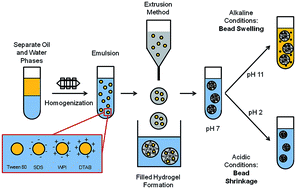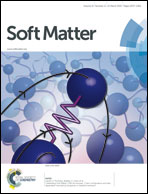Retention and release of oil-in-water emulsions from filled hydrogel beads composed of calcium alginate: impact of emulsifier type and pH
Abstract
Delivery systems based on filled hydrogel particles (microgels) can be fabricated from natural food-grade lipids and biopolymers. The potential for controlling release characteristics by modulating the electrostatic interactions between emulsifier-coated lipid droplets and the biopolymer matrix within hydrogel particles was investigated. A multistage procedure was used to fabricate calcium alginate beads filled with lipid droplets stabilized by non-ionic, cationic, anionic, or zwitterionic emulsifiers. Oil-in-water emulsions stabilized by Tween 60, DTAB, SDS, or whey protein were prepared by microfluidization, mixed with various alginate solutions, and then microgels were formed by simple extrusion into calcium solutions. The microgels were placed into a series of buffer solutions with different pH values (2 to 11). Lipid droplets remained encapsulated under acidic and neutral conditions, but were released under highly basic conditions (pH 11) due to hydrogel swelling when the alginate concentration was sufficiently high. Lipid droplet release increased with decreasing alginate concentration, which could be attributed to an increase in the pore size of the hydrogel matrix. These results have important implications for the design of delivery systems to entrap and control the release of lipophilic bioactive components within filled hydrogel particles.


 Please wait while we load your content...
Please wait while we load your content...